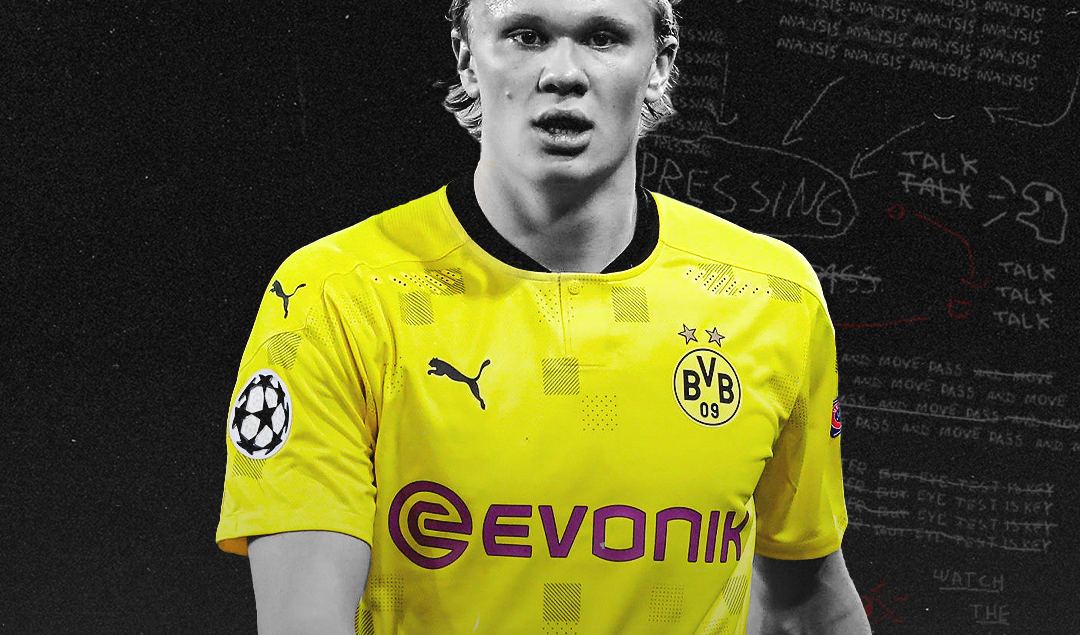Erling Haaland : Why He Wouldn’t Work At A Smaller Club
Erling Haaland has taken the Premier League by storm since making his summer move to Manchester City. 21 goals in 15 games in the league lands him top of the golden boot by a significant distance, with Harry Kane chasing behind him with 15 goals. If Haaland registers two more goals this month, he will equal or better the most goals needed to win the Golden Boot in the last 4 years…. in January!
However, at a smaller Premier League club, Haaland would not be as effective as you would initially think. He wouldn’t carry the team up the league or up the pitch and he certainly wouldn’t score the same amount of goals. Haaland is a typical poacher, in the right place in the right time, looking to receive a pass and score with as minimal touches as possible, and to be able to operate in this way, Haaland requires very good players around him.
If Haaland was surrounded by players that rarely threatened the defence, they could put a few defenders round him to limit him as his first-touch could still be improved. At Manchester City, he is often attacking with Jack Grealish and Phil Foden, two of the best players in the league who have to be doubled up on to limit their own creativity. If Haaland isn’t surrounded by world class players, he cannot dictate the play to involve his attackers and would suffer in most departments.
Most of the Norwegian’s goals come from inside the box, only scoring one outside the box against Wolverhampton Wanderers this season. 8 of his league goals have come from inside the 6 yard-box this season and it isn’t just luck that gets him to the ball first.
He is constantly changing directions around the penalty box but also makes the defender feel in control by soft movements instead of sharp alerting ones. He then stealthily bursts forward, often dummying his direction so the defender shifts his weight before changing his run to have a shot. For this to work, his surrounding players have to be good enough to be able to read his runs before making the pass and most smaller clubs do not have this to their disposal.
Haaland also has limited responsibility in the defence and is ready to break through the lines or get into the box upon winning the ball back. In a smaller side, they often have all 11 players defending and helping to win the ball back. I believe Haaland could do this job but would then be less effective on the attack as it would take him longer to get into the right places with his team in possession.
With him being in the box and attacking positions less, Haaland would often be making late runs into the box which defenders can easily track instead of his darting runs around defenders that catch them off guard. If he were to pick up the ball in his half after dispossessing the opposition, the ball may not be carried far by the striker with his subpar dribbling completions (15th percentile).
Although he is a great player in his own right, Haaland thrives with great players around him and would most likely struggle when playing with players that lack the ability to involve him in the game, with his passes attempted in the 14th percentile, it is clear that he is effective thanks in large part to his teammates’ magic.
At 22 years old, Erling Haaland has already amassed an unprecedented scoring ratio of 28 goals in 23 Champions League appearances, and he has delivered his goalscoring prowess in Austria, Germany and now England. He has firmly established himself as one of the finest players in the world, and with a contract until 2027, it is unlikely that he will be leaving the Etihad anytime soon.
By: Lucas Chambers / @lucaschamberstv
@GabFoligno / Sebastian Frej / MB Media / Getty Images
